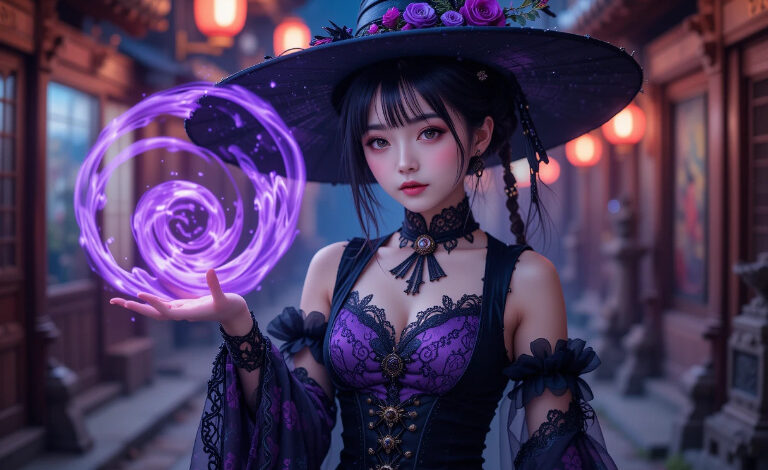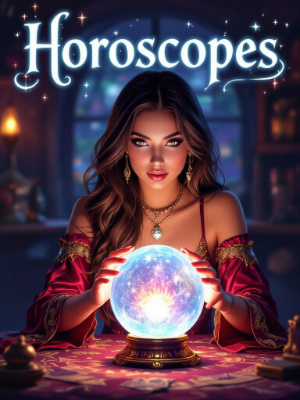
Curious About Witchcraft? Start Here
Witchcraft is one of those things people are either deeply drawn to or wildly curious about—sometimes both. Whether it’s a whisper in the woods or the sudden urge to light a candle with meaning, something about the craft calls to the soul. And for those of us who live this path, it’s not just a vibe—it’s a way of life. The herbs we keep, the moons we follow, and the energy we weave all come together in a rhythm that feels ancient and deeply personal.
Still, I get asked all sorts of questions. Friends, strangers, curious souls online—they all want to know what it really means to be a witch. Some questions are sweet and wide-eyed, others come with a raised brow, but I welcome them all. Because at the heart of it, witchcraft is something to be shared, not hidden in the shadows (unless you like the shadows, of course).
People think you have to be born under a special moon or come from a long line of spellcasters to be a real witch, but that’s not true. The truth is—witchcraft is a path. And like any path, you can choose to walk it with open eyes and a wild heart, no matter where you came from or what you were taught before.
So if you’ve ever wondered what’s real, what’s made-up, and how it all works, I’ve gathered some of the most common questions I hear—and I’m answering them for you here, witch to witch (or witch-to-be). Let’s get into it.
Common Witchcraft Questions and Answers
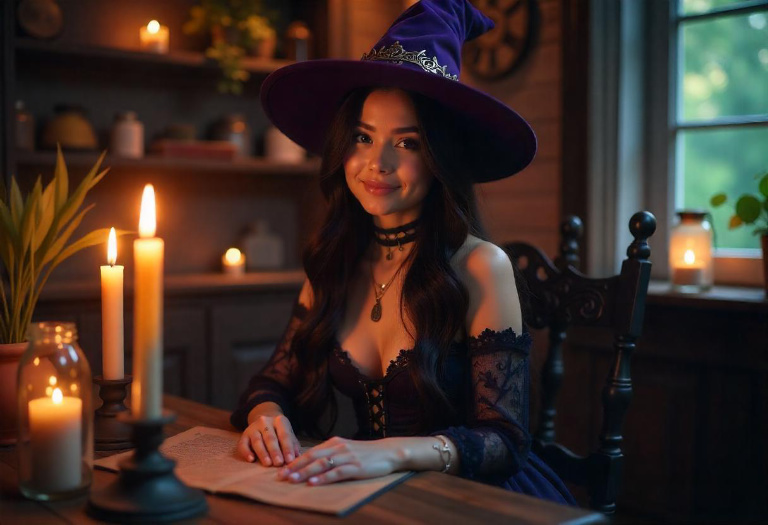
1. Is magic real?
Yes, magic is real. It’s not about waving a wand and turning pumpkins into carriages—though that would be convenient. Real magic is the energy we shape with intention. It’s lighting a candle with a focused wish, whispering words to the moon, or stirring your tea with love and protection in mind. Magic is subtle, sometimes quiet, but always there if you’re open to it.
2. Can anyone become a witch?
Absolutely. You don’t need to be born into it or have a witchy grandma (though that’s always fun). If the craft calls to you, you can answer. Being a witch is about connecting with nature, working with energy, trusting your intuition, and living with intention. It’s not about perfection, it’s about alignment. If your heart’s in it, you’re already on your way.
3. Do witches worship the devil?
Nope. That’s one of the biggest misconceptions out there. Witchcraft is not Satanism. Many witches don’t even believe in the devil at all—it’s not a part of our path. Some witches follow gods and goddesses from ancient pantheons, some work with spirits, ancestors, or just the energies of nature. Witchcraft is spiritual, not evil.
4. What do witches actually do?
We do all kinds of things! Cast spells, mix herbal remedies, read tarot cards, talk to the moon, set intentions, and walk barefoot in the forest (when we can). Witchcraft is deeply personal. Some witches work with deities, others with crystals or elements. Some are kitchen witches, some do candle magick, and some just talk to plants like old friends. There’s no one way to be a witch.
5. Do spells really work?
Yes, but they’re not like flipping a switch. Spells are a mix of intention, energy, and action. Think of them like planting seeds. You cast, you water it with faith and follow-through, and then you give it time. Spells can shift energy, open doors, attract or protect—but you also have to meet the universe halfway.
6. Do I need fancy tools to be a witch?
Not at all. Tools are helpful, and they can be beautiful—but they’re not necessary. Your voice, your hands, your breath, your intention—these are your true tools. A kitchen spoon can be a wand. A teacup can become a cauldron. Start with what you have, and let the rest come naturally.
7. Is it dangerous to practice witchcraft?
Like anything, it’s all about how you use it. Witchcraft, when practiced with respect, honesty, and intention, isn’t dangerous. But if you dabble without grounding, protection, or understanding, you can stir up energy you’re not ready for. Always respect the forces you work with and protect yourself energetically—just like you wouldn’t light a fire without knowing how to put it out.
8. Can I still be religious and be a witch?
Yes, you can. There are Christian witches, Jewish witches, Buddhist witches—you name it. Witchcraft isn’t a religion, it’s a practice. You can weave it into your existing beliefs or build something completely your own. It’s your path. Make it sacred in a way that feels right to you.
9. How do I know if I’m doing it right?
If it feels right in your bones, you probably are. There’s no official witchcraft handbook (thankfully). The best way to learn is to do. Try things. Read, explore, listen to your gut. Trust your inner knowing. Mistakes are part of the journey, and honestly? They’re often the most magical parts.
10. Where should I start if I’m brand new?
Start small and start with curiosity. Learn about the moon phases, keep a little notebook of things you notice, light a candle with intention, talk to your plants. Read books that feel good. Find a stone that calls to you. You don’t have to know everything at once—just take one step. That’s how the path begins.
11. Can men be witches too?
Yes, of course. The term “witch” isn’t gendered—anyone who chooses the path and honors it can be a witch, no matter how they identify.
12. How do I know if I’m a witch?
If you feel a strong pull to nature, the moon, energy, rituals, herbs, or the unseen—you might already be one. Being a witch is more about intention and awareness than a title. If you feel it in your bones, you probably are.
13. What’s the difference between a witch and a psychic?
They can overlap, but they’re not the same. A psychic focuses on sensing energy, often to gain insight or see beyond the present. A witch works with energy to influence, heal, protect, or create. Some witches are psychic, and some psychics work with magic—it’s all connected, but not identical.
14. Are there different types of witches?
Yes! There are kitchen witches, green witches, cosmic witches, sea witches, and more. Some specialize in herbs, others in astrology, or divination, or ancestral work. You don’t have to pick a type—just follow what feels natural to you.
15. Is witchcraft evil or dark?
No, witchcraft is neutral. It’s how you use it that matters. Most witches follow a personal code, often rooted in kindness, balance, and respect for energy. Sure, we can hex—but most of us focus on healing, growth, and protection.
16. Do witches wear special clothes or look a certain way?
Not at all. A witch can be in jeans and a hoodie, or in a flowing velvet cloak—whatever makes you feel powerful and comfortable. The magic isn’t in what you wear. It’s in you.
17. How do I find my own path in witchcraft?
Start with curiosity. Read, experiment, journal, watch the moon, notice what pulls at your heart. You’ll naturally begin weaving together your path through what feels right, what works for you, and what brings you peace and power.
18. Do you have to be Wiccan to be a witch?
Nope! Wicca is a religion, and some Wiccans are witches—but you don’t need to follow Wicca to practice witchcraft. Many witches follow their own paths, mixing traditions or crafting something entirely unique.
Common Spellcasting Questions
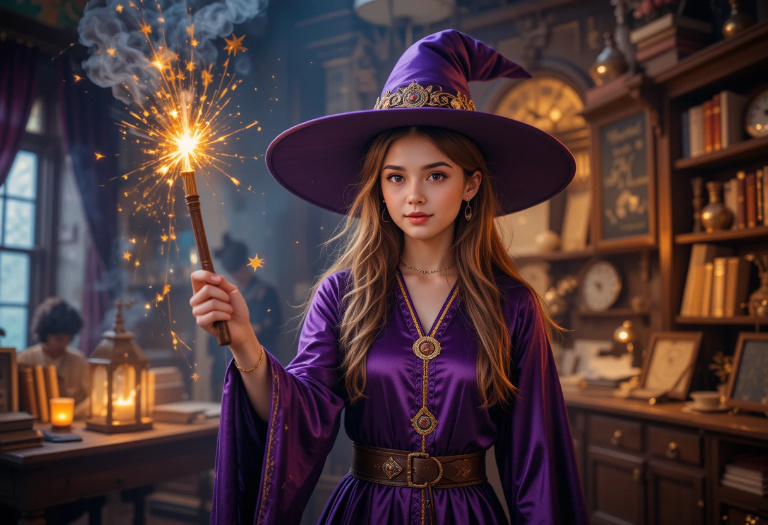
1. What is a spell?
A spell is a focused intention mixed with energy and action. It’s a way to send out your desire into the universe, like a message carried on the wind. Some spells are simple (a whispered wish), others more ritualistic. They all work when done with true intent.
2. Do I need to rhyme my spells?
Nope—but it can help if it flows for you. Rhyming isn’t required, but it does help focus the mind and make your spell easier to remember. What matters most is your belief, not your poetry.
3. Can I write my own spells?
Yes, and you should! Personal spells carry your energy, your words, and your power. You don’t have to rely on books or traditions—though they can inspire you. Trust your intuition and craft what feels real.
4. How long do spells take to work?
It depends. Some spells work quickly, others take time. Think of it like planting a seed—some sprout overnight, others grow slowly. Trust the process, and don’t keep digging it up to check. Let it unfold naturally.
5. Do I need to believe for the spell to work?
Belief fuels the spell—but even a shaky belief can carry power if the intention is strong. Try to keep your energy focused and open. Doubt happens, but trust in the energy you’re working with.
6. What should I do if a spell doesn’t work?
Don’t panic—it happens to all of us. Reflect on your intention, your timing, and your energy. Sometimes the spell needs tweaking, sometimes the timing’s just off, and sometimes the universe has a better idea in store.
7. Is it okay to repeat a spell?
Yes. Repeating a spell can help strengthen it. Just give it space in between. You don’t want to overload the energy with desperate vibes—calm confidence works better.
8. Do I need to cast spells during the full moon only?
Nope. Every moon phase has power. Full moons are great for manifesting, but new moons are perfect for starting fresh, and waning moons are great for letting go. The trick is aligning your spell with the moon’s rhythm.
9. Can spells backfire?
They can if you’re careless or if you send out energy you wouldn’t want back. That’s why intention and clarity matter so much. Always ground and protect yourself, and never cast in anger unless you fully understand the consequences.
10. Do I have to say spells out loud?
Not always. Whisper, speak, think, or even write them down. The energy behind the words matters more than the volume. Sometimes a silent spell is just as powerful as a shouted one.
Protection and Banishing Magic
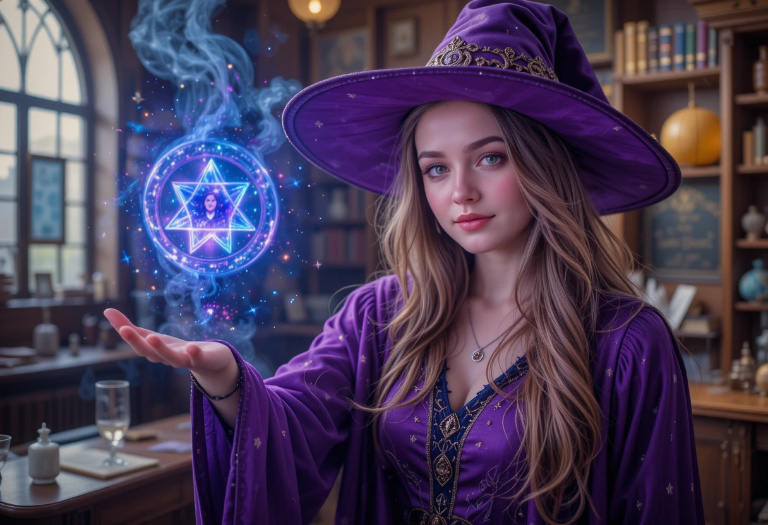
1. What is protection magic?
Protection magic is about keeping yourself energetically safe. It includes things like wearing charms, casting circles, cleansing your space, or carrying herbs and crystals. It’s like energetic armor—gentle but strong.
2. What’s the easiest way to protect myself daily?
Light a white candle in the morning, visualize a shield of light around you, and say something simple like, “I am protected, body and soul.” You can also carry black tourmaline or wear a charm. Little daily things build big protection.
3. How do I know if I need to do a banishing?
If your space feels heavy, if you’ve been drained, or if something just feels off—you might need to banish unwanted energy. Trust your instincts. If it feels sticky or strange, it probably needs clearing.
4. What’s the difference between banishing and cleansing?
Cleansing clears out general energy—like dusting the room. Banishing is more direct, used when you want to push something specific away, like negative spirits, curses, or emotional residue. Cleansing is gentle. Banishing is firm.
5. Can I protect my home too?
Absolutely. Sweep with intention, place salt at doorways, hang protective herbs like rosemary or sage, or draw sigils above your front door. Your home is your sacred space—treat it like one.
6. Are protection spells enough on their own?
Protection magic works best when combined with practical steps—like setting boundaries, staying grounded, and listening to your gut. Magic supports your actions, but it doesn’t replace common sense.
7. Can I protect someone else?
Yes, with care. You can send protection to loved ones through visualization, charms, or written spells. Just make sure it’s done with love and never against their will. Consent matters—even in magic.
8. How often should I cleanse my space?
As often as needed. Some witches do it weekly, others monthly, or after conflict, illness, or guests. If it starts to feel off, heavy, or chaotic—cleanse it. Your space will thank you.
9. What tools can I use for protection magic?
Black salt, protective crystals (like obsidian or onyx), mirrors, sigils, witch bottles, protective herbs (rosemary, bay leaf), and enchanted jewelry. Your body is a tool too—don’t forget the power in your voice and intention.
10. What if I feel cursed or hexed?
Stay calm. Cleanse yourself with a ritual bath (salt, rosemary, lemon), light a white candle, and speak words of release. Follow up with a banishing spell if needed. Then, reinforce your protection. You have more power than anything sent your way.
Love and Relationship Magic
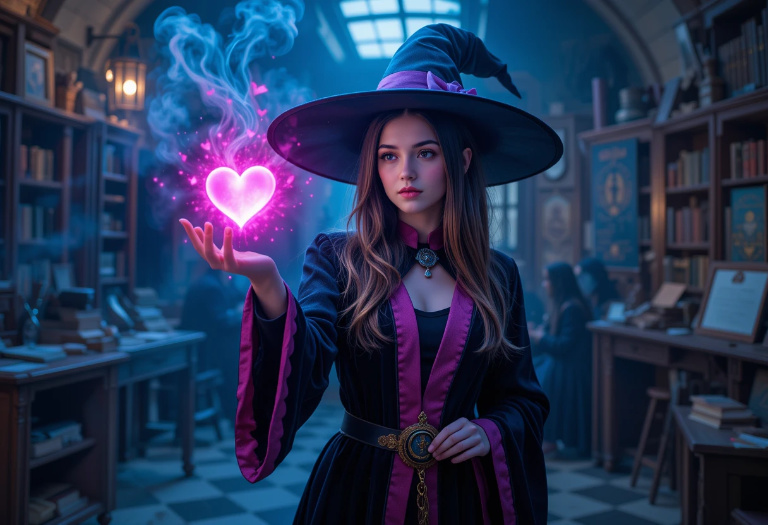
1. Can I do a spell to make someone fall in love with me?
You can, but you really shouldn’t. Forcing someone’s will is never a good idea—it messes with free will, and honestly, it never ends well. Instead, try a spell to attract the right kind of love to you, someone who’s aligned with your energy and ready for what you want.
2. What’s a good beginner love spell?
A simple self-love spell. Light a pink candle, anoint it with rose oil (or olive oil if that’s all you have), and whisper affirmations to yourself as it burns. The stronger your love for you, the better your relationships with others become. It’s the foundation of all heart-based magic.
3. Can I do a love spell for someone else?
Only with permission. If a friend asks for help attracting love, that’s fine—but don’t go casting for someone who hasn’t asked. Love spells should always be consensual, just like love itself.
4. What kind of moon is best for love magic?
A waxing or full moon is perfect—it’s all about growth and magnetism. If you’re doing a self-love or new relationship spell, the new moon can be sweet too. The energy of the moon helps amplify whatever you’re calling in.
5. Do love spells really work?
They can, if your heart and intentions are clear. But they don’t replace real connection, communication, and effort. Magic can open doors, but you still have to walk through them and show up fully.
6. How do I know if a love spell worked?
You might start noticing synchronicities—unexpected messages, chance meetings, or a sudden shift in your energy. But remember, love spells often work subtly. Sometimes they bring clarity, healing, or closure first—before something new comes in.
7. What colors and crystals are good for love magic?
Pink and red are your go-to colors. Rose quartz, rhodonite, garnet, and even moonstone carry strong love energy. Wear them, meditate with them, or use them in your rituals to amplify loving vibrations.
8. Can I use tarot or divination to ask about love?
Absolutely. Tarot is a beautiful tool for checking in on relationship energy—whether it’s new love, ongoing partnership, or self-love. Just make sure you’re asking with clarity and openness, not fear or obsession.
9. How do I cleanse after a breakup?
Try a cord-cutting ritual. Take two candles, tie them with a string, then burn them and let the flame break the connection. Afterwards, bathe in salt water with lavender or rosemary, and let all the old energy wash away. You deserve fresh love, not haunted energy.
10. Is it okay to be single and still do love magic?
Yes, and actually—it’s the best time! Love magic isn’t just about romance. It’s about healing, opening the heart, calling in the right energy, and aligning yourself with joy and connection. Single witches often do the strongest heart work.
Money and Prosperity Magic
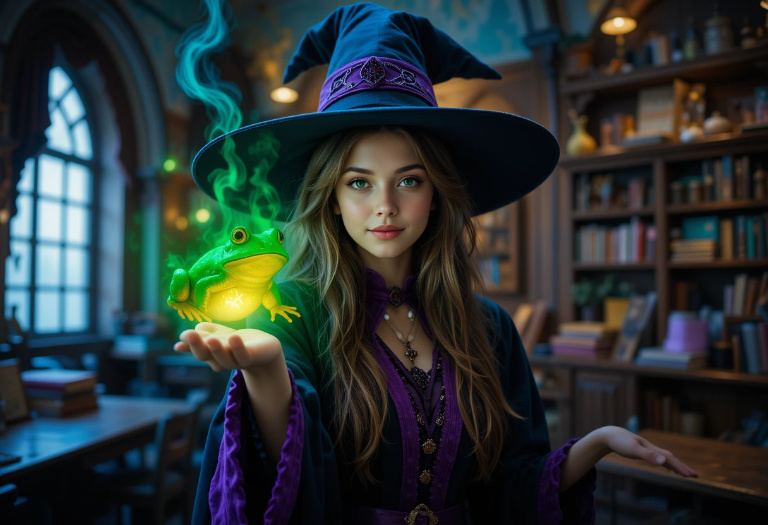
1. Can magic help with money?
Yes. Money magic isn’t about greed—it’s about flow, security, and opportunity. When done right, it helps unblock stagnant energy and align you with abundance in a grounded, healthy way.
2. What’s a good beginner prosperity spell?
Light a green candle, sprinkle cinnamon and basil around it, and speak aloud what you’re calling in: maybe it’s stable income, an open door, or just peace around money. Keep the candle safe and let it burn as you visualize abundance flowing in.
3. How does money magic work?
It works by shifting your mindset and energy around wealth. You attract what you’re aligned with—so if you believe you’re worthy of abundance, opportunities tend to show up more often. Magic amplifies your intention and keeps your energy in motion.
4. Can I manifest a specific amount of money?
Yes, but be flexible with how it shows up. Focus on the feeling that amount brings—security, freedom, stability—and trust that the universe might deliver it in a different (and sometimes better) way than you expected.
5. What herbs and crystals help with money magic?
Cinnamon, basil, bay leaf, clove, mint, and patchouli are strong for drawing wealth. As for crystals—pyrite, citrine, green aventurine, and tiger’s eye are solid allies. Carry them, dress candles with them, or keep them near your wallet.
6. Is it okay to do money magic if I’m really struggling?
Yes, but start gently. Focus first on clearing fear and panic. Try a cleansing ritual to release scarcity, then follow with a simple abundance spell. Desperate energy can cloud the spell—so ground yourself first.
7. What day is best for prosperity spells?
Thursday is ruled by Jupiter, planet of growth and expansion—great for wealth and success magic. You can also work on a waxing moon to draw in more abundance.
8. Can I use sigils for money?
Definitely. Draw a sigil that represents your financial goal, charge it with energy (through breath, candle flame, or visualization), and place it in your wallet, under a candle, or anywhere it can work quietly in your favor.
9. How do I keep the flow of money going once I’ve done the spell?
Practice gratitude, take aligned action, and keep your energy clear. Money likes movement—so give, receive, and share when you can. Bless your purchases. Pay with love. Be open to unexpected sources of wealth.
10. Is it wrong to ask for more when I already have enough?
No. Wanting more doesn’t make you greedy—it makes you a growing soul. Just stay rooted in gratitude and clarity. When your abundance overflows, you have more to share with others. That’s beautiful magic.
Healing and Well-being Magic

1. Can magic help with physical healing?
Yes, though it should always complement, not replace, medical care. Healing magic can soothe, calm, and accelerate recovery—but always work with your doctor too. Energy and medicine can walk hand in hand.
2. What’s a simple healing spell?
Light a blue or white candle, surround yourself with calming herbs (like chamomile, lavender, or rosemary), and speak gently to your body. Visualize healing light flowing through every cell. Breathe it in. Let yourself rest.
3. What herbs are best for healing?
Lavender, chamomile, rosemary, calendula, thyme, and peppermint are beautiful allies. Each has its own specialty—some for physical healing, others for emotional or spiritual wounds. Always research and use safely.
4. Can I do healing magic for someone else?
Yes, with love and respect. Always ask permission (energetically or directly). You can light a candle for them, send healing energy in meditation, or make a charm bag filled with soothing herbs. Intent and care go a long way.
5. How do I protect my energy while helping others heal?
Ground and shield yourself before any healing work. Picture a bubble of light around you. Cleanse afterward with smoke, salt, or water. Helping others is beautiful—but never at the cost of your own well-being.
6. What crystals support healing?
Amethyst, clear quartz, fluorite, rose quartz, and selenite are great for healing. Place them near your bed, wear them close, or meditate with them. Let them amplify calm, clarity, and renewal.
7. Can I use water in healing spells?
Yes! Water is incredibly healing. Add herbs to a bath, bless a cup of tea, or speak affirmations into your drinking water. Water holds intention—it can carry your healing energy deep within.
8. How do I heal emotional wounds with magic?
Start with self-compassion. Light a pink candle, journal your feelings, and do a cord-cutting ritual if needed. Carry rose quartz, take lavender baths, and speak to yourself with softness. Healing is a slow spell—give it time.
9. How do I know if my healing magic is working?
You might feel lighter, more at peace, or more in tune with your body. Signs can be small—better sleep, clearer thoughts, fewer aches. Trust the gentle shifts, and keep nurturing the process.
10. Can I heal ancestral or spiritual wounds with magic?
Yes, and it’s powerful work. Use candles, meditation, offerings, and journaling to connect with your lineage. Ask what needs to be released. Healing generational wounds frees not only you—but those who came before and after you.
Divination and Fortune Telling
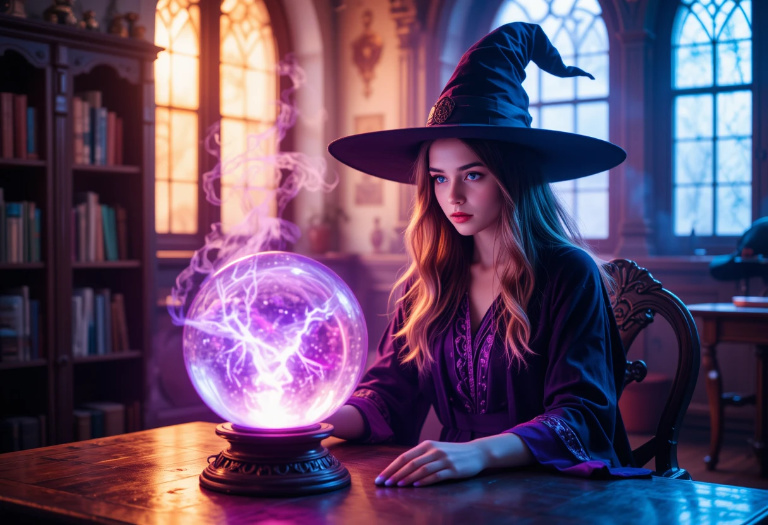
1. What is divination exactly?
Divination is the magical art of receiving messages—from the universe, your higher self, spirit guides, or even the collective energy around you. It’s not about predicting an unchangeable future, but more about guidance, clarity, and confirmation.
2. Can anyone learn to read tarot or runes?
Yes, absolutely. These tools respond to your intuition, not to any secret club. With practice, patience, and a genuine connection to your deck or runes, anyone can learn. It’s more about trust than memorizing meanings.
3. What’s the difference between tarot and oracle cards?
Tarot has structure—78 cards with suits and archetypes. Oracle cards are more free-flowing and themed differently depending on the deck. Tarot is great for detailed answers; oracle cards are more intuitive and emotional.
4. Do I need to be psychic to do divination?
Nope. Intuition is something we all have—it’s just a muscle, and divination is one way to strengthen it. The more you trust your gut and let go of self-doubt, the more your readings will speak true.
5. How do I cleanse my divination tools?
Smoke from herbs like sage or rosemary, moonlight, or even sound can cleanse your cards or runes. Hold your tool in your hands and visualize old energy dissolving. They pick up energy, so give them love and care.
6. Can I read for myself, or is that too biased?
You can read for yourself, and it’s actually one of the best ways to grow your intuition. Just be honest—if you’re too emotionally close to the situation, the messages might get a little fuzzy. That’s normal.
7. What if a reading gives me a bad message?
Don’t panic. Cards or signs that seem “bad” often show what needs healing or shifting. They aren’t doom—they’re guidance. Use them as a flashlight, not a sentence.
8. Can I use pendulums for answers?
Yes, pendulums are great for yes/no questions. But you have to be really centered—your own energy can sway the answer. Cleanse your pendulum, ask clearly, and always double-check with your gut.
9. What’s the best time to do divination?
When you feel clear, calm, and connected. The full moon, quiet mornings, or just after meditation can help—but really, any time your energy is focused is a good time to ask the universe a question.
10. Are there signs I should stop or take a break from divination?
Yes. If you’re feeling anxious, obsessed with getting answers, or keep pulling cards until you “like” the outcome—that’s a sign to step back. Divination should support your spirit, not stress it.
Dreamwork and Visions

1. Can dreams really have spiritual meaning?
Absolutely. Dreams are one of the easiest ways your soul, spirit guides, or ancestors can reach you. They often speak in symbols and feelings more than logic. Pay attention to repeated themes or strong emotions.
2. How do I start remembering my dreams?
Keep a dream journal next to your bed and write anything you remember as soon as you wake up—even if it’s just colors or feelings. Doing this trains your mind to hold onto dream messages more clearly.
3. What is lucid dreaming, and can witches do it?
Lucid dreaming is when you become aware that you’re dreaming and can sometimes control the dream. Witches love this because it opens the door to magical work while you sleep—like spirit travel, healing, or receiving visions.
4. Can I get messages or answers through dreams?
Yes. Ask before sleep. Light a candle or hold a crystal (like amethyst or moonstone), and speak your question aloud. You might receive symbols, conversations, or just a feeling in your dream. The answer isn’t always direct—but it’s there.
5. What does it mean if I dream of someone who’s passed away?
It could be a visitation. Spirits often use dreams to check in, comfort us, or deliver messages. If it felt real or comforting, it likely was more than a dream. Light a candle and thank them.
6. How can I protect myself during sleep?
Place protective herbs like mugwort or lavender under your pillow, wear a small charm to bed, or visualize a bubble of light around you as you fall asleep. You can also ask your guides to keep watch.
7. What is astral travel, and is it dangerous?
Astral travel is when your spirit leaves your body to explore other realms during sleep or meditation. It’s not dangerous if you’re grounded and protected—but it can feel intense. Always shield yourself and call yourself back fully after.
8. Can nightmares have magical meaning?
Yes. Nightmares can be emotional releases, shadow work bubbling up, or warnings. They’re not always fun, but they’re powerful teachers. Don’t ignore them—try to decode them gently and ask what your spirit is trying to heal.
9. What herbs or crystals help with dreaming?
Mugwort, lavender, and chamomile are dream allies. Sleep with them nearby or drink as tea. Crystals like amethyst, labradorite, and moonstone help open dream channels and keep energy calm.
10. How do I know the difference between a dream and a vision?
Visions often feel louder—more real, vivid, and emotionally charged. You may even wake up with the feeling lingering for hours. They usually come with clarity or a sense of knowing. Dreams drift, but visions stay.
Moon Magic and Lunar Cycles
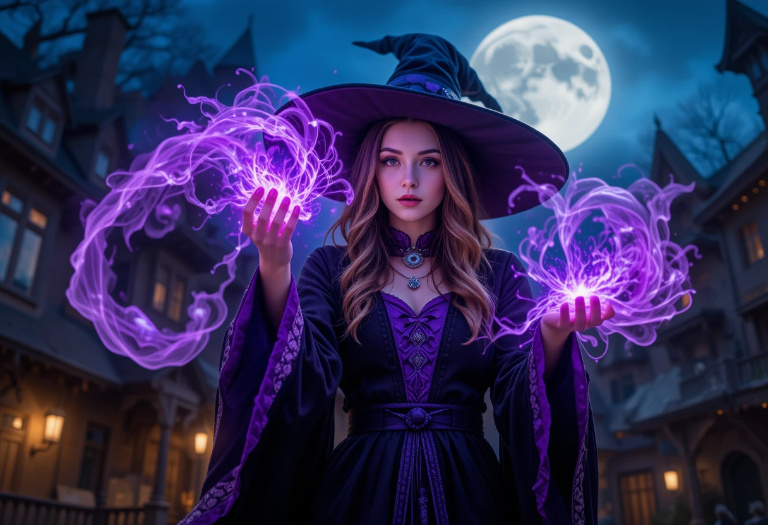
1. Why is the moon so important in witchcraft?
The moon controls tides, rhythms, and emotions—so naturally, it holds major power in our craft. Each phase of the moon brings a different kind of magic, and working with her is like syncing up with the heartbeat of nature.
2. What’s the best moon phase for casting spells?
Depends on the spell. New moon is for new beginnings, waxing moon builds things up, full moon is for manifesting or celebrating, and the waning moon is for release or banishing. Each phase has its own strength.
3. How do I start working with the moon?
Start by tracking her cycles. Watch how your mood and energy shift with each phase. You don’t need a huge ritual—just light a candle, journal, or sit outside under her light. It’s all about connection.
4. Can I do moon magic indoors?
Yes! Even if you can’t see her, the moon’s energy still reaches you. Just acknowledge her phase, speak your intention, and you’re tapping into her magic. Crystals, water, and fire can all help carry that lunar energy indoors.
5. What’s moon water and how do I make it?
Moon water is just water that’s been charged under the moon. Leave a jar out overnight (preferably covered), set an intention, and let the moonlight bless it. You can use it in spells, baths, or to anoint yourself.
6. What crystals are connected to the moon?
Moonstone (of course!), selenite, labradorite, and clear quartz are moon-charged beauties. Keep them on your altar, under your pillow, or charge them with moonlight to amplify their energy.
7. Is it okay to skip moon rituals sometimes?
Of course. Life happens. The moon isn’t judging you. You can still honor her energy in small ways—light a tea candle, say a prayer, or just take a quiet moment to check in with yourself.
8. What’s a good new moon ritual?
Write a list of what you’re calling into your life. Light a candle, breathe deeply, and read your list aloud. Bury it, burn it (safely), or keep it on your altar. New moon is all about setting seeds.
9. Can the moon affect my moods?
Absolutely. The moon pulls at the tides and we’re made mostly of water. Full moons can make emotions peak, while new moons may feel quiet or tender. It’s not all in your head—it’s in your energy.
10. How do I track the moon without an app?
Look up! Watch the sky, get familiar with her shapes. You can also use an old-school moon calendar, or even draw the phases in your journal. Connecting with the moon is less about tech and more about attention.
Nature-Based Magic

1. What is nature-based magic?
It’s magic that flows from the natural world—plants, animals, stones, weather, and seasons. Instead of relying on tools made by others, this type of magic pulls from the raw and living energy all around you.
2. How can I connect with nature for magical purposes?
Go outside, sit quietly, and observe. That’s truly it. Nature will start speaking to you in patterns, instincts, and feelings. Start with trees, the moon, or even the dirt beneath your feet—they all hold energy you can work with.
3. Can I use things I find in nature for spells?
Yes! Fallen leaves, feathers, stones, flowers—these can all be potent magical tools. Just be respectful: never take from endangered plants or sacred places, and always give thanks or a little offering.
4. How do I work with the seasons?
Celebrate the turning of the Wheel of the Year (solstices, equinoxes, and cross-quarter days). Each season brings unique energy—planting in spring, abundance in summer, releasing in fall, and rest in winter.
5. Do I have to follow a specific tradition to practice nature magic?
Not at all. Nature magic is about relationship, not rules. You can honor the land you’re on, follow the rhythm of the earth, and listen to your intuition—no lineage or label required.
6. What animals are considered magical?
All animals have magical qualities. Crows, owls, snakes, cats, deer—each carries symbolism and energy. If a certain animal keeps appearing in your life, it might be a spirit messenger or guide.
7. What’s green witchcraft?
Green witchcraft is a practice centered around nature, herbs, healing, and earth-based rituals. Green witches are often gardeners, herbalists, and foragers who find magic in the everyday natural world.
8. Can I do nature magic if I live in the city?
Absolutely. The wind still blows, the moon still rises, and weeds still grow between cracks. Houseplants, herbal teas, or even sitting by a window can be your link to nature.
9. What are some beginner-friendly nature spells?
Try a leaf-release spell (write something you want to release on a leaf and let it go into the wind or water), make a tea with intention, or charge water under the sun or moon.
10. How do I honor the earth in my magic?
Leave no trace. Use biodegradable tools, give offerings (like water, flowers, or food), and say thank you to the spirits of the land. The more love you show the earth, the more she gives back.
Deities and Spirit Work
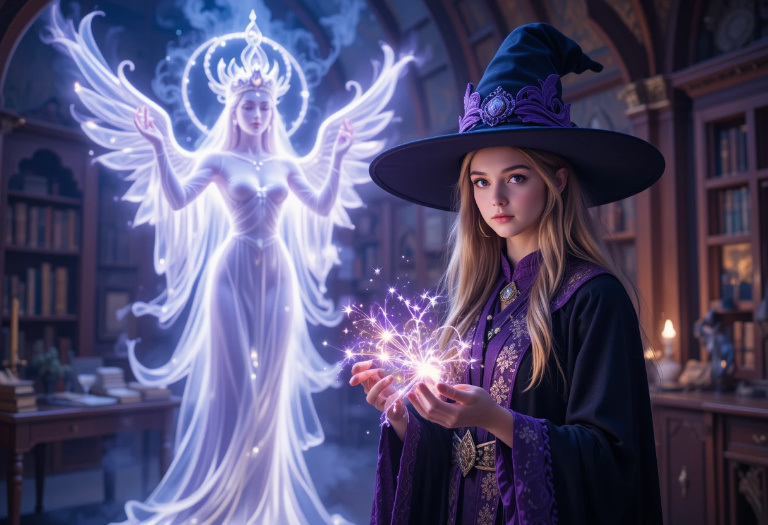
1. Do I have to work with deities to be a witch?
Nope. Many witches do, but many don’t. Your practice is yours. Some feel called to work with goddesses or gods, some work only with spirits or ancestors, and some just focus on energy and nature.
2. How do I know if a deity is calling me?
You might see signs, dreams, repeating symbols, or feel drawn to a certain myth or name. It’s usually a gentle pull at first—and if it’s persistent, it’s worth looking into. Trust your gut.
3. What’s the best way to start working with a deity?
Research them, set up a small space or altar, and introduce yourself. Offer something simple—like a candle, a flower, or a piece of fruit—and speak from the heart. Relationships with deities are like friendships; don’t rush.
4. What’s the difference between gods, goddesses, and spirits?
Deities are divine beings tied to specific myths or cultures. Spirits are more general—they might be nature spirits, ancestors, or entities connected to places. Both can guide and protect you in different ways.
5. Is it disrespectful to work with gods from cultures not my own?
It depends. Respect and education are key. Some deities are closed and meant only for people from certain traditions. Others are open and willing to work with anyone who honors them properly. Do your research and approach with humility.
6. What are spirit guides?
Spirit guides are non-physical beings that help you through life—some might be ancestors, some animal spirits, others are simply beings of light. You might connect with them through meditation, dreams, or divination.
7. How do I protect myself during spirit work?
Always set boundaries. Cleanse your space, cast a protective circle, and clearly state who you’re willing to communicate with. Never invite in random energies. Trust your instincts—if something feels off, stop.
8. Can I talk to my ancestors in ritual?
Yes, and it’s deeply healing. Light a candle, place their photo on your altar, and speak to them like family—because they are. They can offer wisdom, strength, and connection to your roots.
9. How do I know if a spirit is friendly?
They feel warm, calming, and respectful. If something feels pushy, scary, or draining—it’s a no. You’re in charge of your space. Only welcome in spirits that serve your highest good.
10. Do I need a special gift or ability to do spirit work?
Not at all. Everyone has the potential. Some people are naturally sensitive, but most of it comes down to practice, boundaries, and intention. Spirit work is less about power, more about presence.
Sigils and Symbols
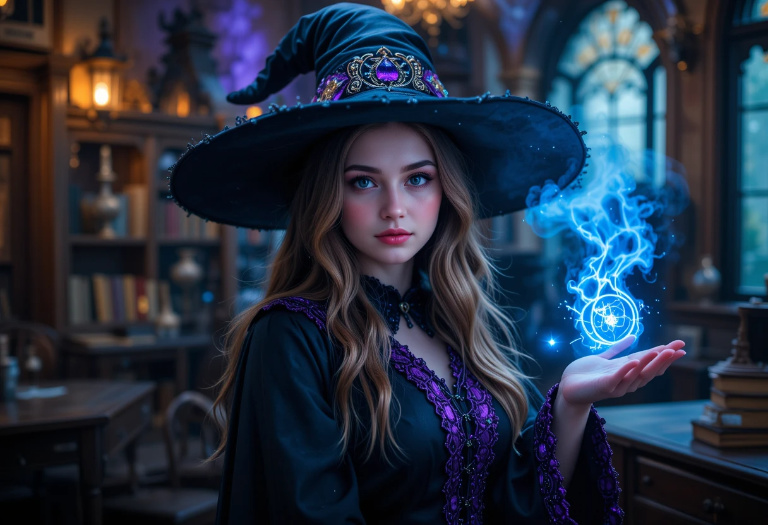
1. What is a sigil?
A sigil is a symbol created to hold and direct magical intention. It’s like drawing a tiny spell. You charge it with energy, then release it to do its work—quietly and powerfully.
2. How do I make a sigil?
Write out your intention (like “I am safe”), remove the vowels and repeating letters, and combine the remaining ones into a symbol. It doesn’t have to look perfect—just make it feel personal and magical.
3. How do I charge a sigil with energy?
Focus your will and attention on it—breathe into it, dance around it, burn a candle beside it, or whisper your intent. You can burn it, bury it, wear it, or just keep it in a secret spot.
4. Do I need to believe in the sigil for it to work?
Yes, belief is the fuel. You’re giving the symbol its power. It’s less about the design and more about the energy you put into it. Faith + focus = magic.
5. Can I draw sigils on my body?
Yes, and it’s actually very powerful. Use oil, makeup, henna, or just draw with your finger. Your skin becomes part of the spell—great for things like confidence, protection, or energy boosts.
6. What’s the difference between sigils and traditional symbols?
Sigils are custom-made for specific intentions. Traditional symbols—like the pentacle, eye of Horus, or triquetra—carry ancient meaning and collective energy. Both are powerful, just used differently.
7. Is it okay to reuse sigils?
If it’s a personal sigil you’ve charged and it still holds your intent, yes. But if you feel the energy has faded or your goal has changed, it’s better to create a new one that matches your current path.
8. Can I make sigils for other people?
Yes, as long as you have their consent. You can make protective sigils for loved ones, or empowering ones to support them. Always use your magic ethically—never mess with someone’s will.
9. What tools do I need for sigil work?
Honestly, just a pen and paper. But you can also carve into candles, stitch into fabric, engrave in wood, or paint with herbs. Your creativity is the magic tool.
10. Where should I place my sigils?
Wherever makes sense for the spell’s purpose. On your mirror, in your wallet, inside your shoes, under your pillow, on your phone case. Hidden or visible—either way, it’s quietly working for you.
Alchemy and Transformation Magic
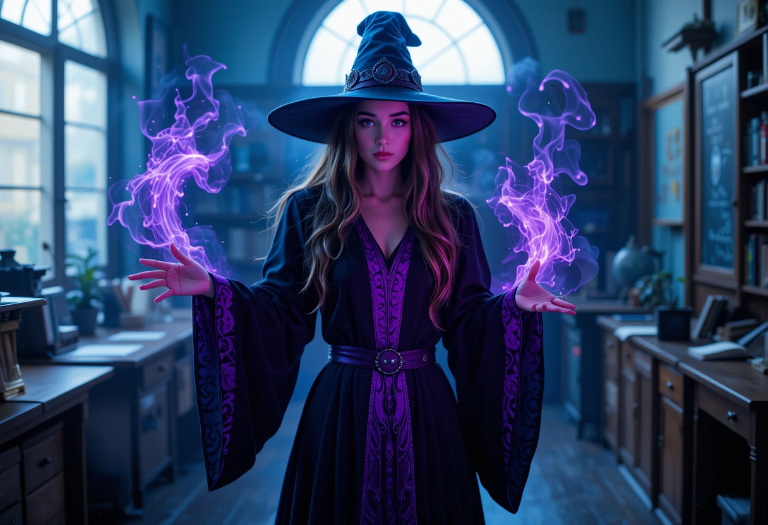
1. What is alchemy in witchcraft?
Alchemy is more than turning lead into gold—it’s about spiritual transformation. In witchcraft, it means shifting energy, transmuting pain into power, and evolving the self through magical processes.
2. Can anyone practice alchemy?
Yes. You don’t need a lab coat or ancient texts (though they’re fun). Alchemy is really about intention, awareness, and change. Every spell you do with the aim of growth or healing is a little piece of alchemy.
3. What are the stages of alchemical transformation?
Traditionally, there are seven: calcination, dissolution, separation, conjunction, fermentation, distillation, and coagulation. They sound fancy, but they mirror our human processes—burning away what doesn’t serve, blending the best parts, and becoming whole.
4. How does shadow work tie into alchemy?
Shadow work is the first step in spiritual alchemy. You have to face your hidden parts (calcination), break them down (dissolution), and start turning that darkness into something beautiful and wise. It’s deep, messy, and oh-so-magical.
5. Can alchemy help with emotional healing?
Absolutely. Alchemy teaches us that nothing is wasted—not even pain. Through rituals, journaling, dreamwork, or spells, you can transmute grief, shame, or fear into strength, insight, and spiritual gold.
6. Are there physical practices tied to transformation magic?
Yes—baths, burning herbs, breathwork, fasting, movement. Your body carries energy, and alchemy can happen through physical shifts. Even changing your space or wardrobe can start to change your spirit.
7. Can crystals or herbs help with transformation magic?
Definitely. Use black obsidian for shadow work, amethyst for transmutation, and labradorite for shifting realities. Herbs like mugwort, lavender, and sage help you clear, open, and evolve.
8. Is transformation magic dangerous?
Only if you ignore your intuition or rush the process. Transformation can stir up intense emotions, so grounding and protection are important. Go at your own pace. Let the magic unfold naturally.
9. What’s the “Philosopher’s Stone” really about?
It’s a symbol for the perfected self—enlightenment, unity, wholeness. While it has roots in old alchemical texts, many witches see it as a metaphor for spiritual mastery or becoming your highest self.
10. How do I start working with transformation magic?
Start by setting the intention to change something within you. Create a ritual, work with journaling or dreams, track your progress, and honor every little shift. Even small changes can be deeply alchemical.
The Ethics of Witchcraft
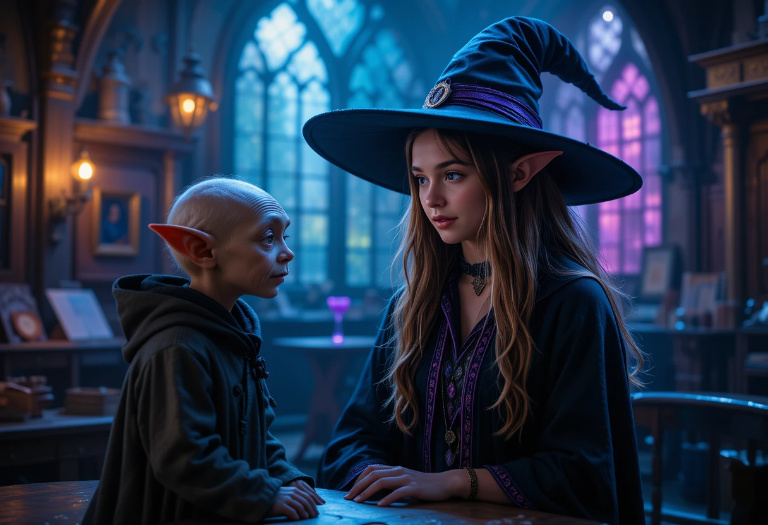
1. Is there a “Witch’s Code” or set of rules?
There’s no single law that applies to every witch, but many follow the “Harm None” idea. In the end, your ethics come down to your values, your path, and your relationship with energy and the unseen.
2. Is it okay to cast spells on other people?
Only if you have their consent—or if the spell is protective and loving with no strings attached. Magic is energy, and you’re responsible for what you put into someone else’s field. Always think it through.
3. What about love spells—are they ethical?
If you’re trying to control someone’s will or force attraction, most witches would say no. But if you’re casting to attract love in general, boost self-love, or open your heart—those are powerful and ethical.
4. Is hexing or cursing ever okay?
This is debated. Some witches believe in defensive hexes when seriously wronged. Others say no way. The key is understanding your intention, the possible outcomes, and being prepared for consequences. Magic isn’t casual.
5. Can I take from different cultures in my practice?
Be mindful. Some practices (like Hoodoo or closed tribal ceremonies) are not meant to be borrowed. Do your research, honor your own roots, and always approach with deep respect and humility.
6. What’s magical consent?
It means getting someone’s okay before involving them in your spellwork—especially for healing, energy work, or big life shifts. Just like in the physical world, energetic boundaries matter.
7. Is it wrong to charge money for spells or readings?
Not at all—energy exchange is ancient. Healers, witches, and seers have always been compensated. Just be honest, fair, and never promise things you can’t control.
8. Do spells ever backfire?
If they’re done with unclear intention, selfish motives, or harmful energy—yes. That’s why grounding, clarity, and protection are important. What you send out has a way of circling back.
9. What’s spiritual bypassing, and why avoid it?
It’s when people use love and light talk to avoid doing deep, shadowy work. True magic is about growth, not avoiding the hard stuff. Real transformation takes honesty and heart.
10. How can I practice ethical witchcraft?
Stay aware. Know your intentions. Respect others’ autonomy. Question yourself often. Stay grounded, open-hearted, and always be willing to learn and grow.
Witchcraft Tools

1. Do I need tools to be a witch?
Nope. Tools are helpful, but not required. Your body, breath, mind, and intention are your most powerful tools. That said, many witches love having physical items to focus energy.
2. What’s an athame?
It’s a ritual blade, often used to direct energy or cut invisible cords. It’s not used for physical cutting—think of it as a magical wand with a little edge.
3. How do I cleanse my tools?
You can smoke-cleanse with herbs, leave them under the moon, place them in salt, bury them, or even use sound or intention. Keep your tools energetically fresh, especially after intense spells.
4. What’s the purpose of a wand?
Wands are used to channel and direct energy, especially in spellcasting and circle work. You can make one from a tree branch, buy one, or even use your finger. It’s all about your focus.
5. What goes on a witch’s altar?
Whatever calls to you. Common items include candles, crystals, herbs, deity statues, tools, photos of ancestors, and seasonal items. Your altar is a living space for your spirit and practice.
6. Do I need a cauldron?
Not really, but they’re lovely and useful. Cauldrons represent transformation and can be used for burning herbs, holding offerings, or mixing spell ingredients. A fireproof bowl works just fine too.
7. How do I choose the right tools?
Let them call to you. Don’t buy things just because others have them. Feel into what you’re drawn to—whether it’s a special stone, a handmade wand, or a thrifted chalice. Magic likes personal connection.
8. Can I use kitchen tools in my magic?
Yes! Wooden spoons, pots, strainers, even rolling pins can become magical tools. Many witches use their kitchens as sacred space—stirring in intention, baking with spells, and blessing meals.
9. What if someone else touches my tools?
Some witches are fine with it, others aren’t. If you feel like their energy shifted your tools, just cleanse them. You’re allowed to have boundaries around your magical stuff.
10. How do I store my tools safely?
Keep them in a special box, wrap them in fabric, or place them on your altar. Just treat them with care and respect. They’re more than objects—they’re allies in your craft.
Ceremonial and Ritual Magic
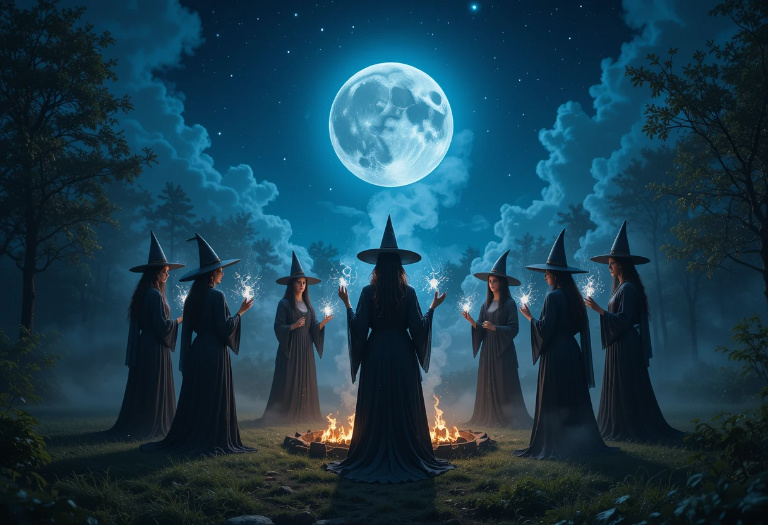
1. What’s the difference between a ritual and a spell?
A spell is usually quick and focused on a specific result—like love, money, or healing. A ritual is more structured and often spiritual or symbolic in nature. It can mark a moment, open a portal, or connect you with something greater.
2. Do I have to follow a script for rituals?
Not at all. Scripts can help when you’re learning, but your energy is what really matters. Many witches write their own rituals or improvise in the moment. Speak from your soul—it’s more powerful than perfection.
3. Why cast a circle?
Casting a circle creates sacred space. It protects you, centers the energy, and separates your ritual from the everyday world. It’s like stepping into a little magical pocket where the veil is thin.
4. What tools are used in ceremonial magic?
Common tools include candles, incense, chalices, athames, wands, and symbols like pentacles. You might also work with robes, specific colored cloths, and ritual oils. But you can also do deep ceremonial work with nothing but your breath and spirit.
5. Can rituals be done alone?
Yes—and many witches prefer solo rituals. Your energy is enough. Whether it’s a full moon ritual or a personal initiation, solo work can be deeply powerful and intimate.
6. What’s the best time to perform a ritual?
It depends on your intention. New moons are great for beginnings, full moons for power, sabbats for seasonal magic. But honestly? The best time is when you feel called. Trust your rhythm.
7. How long should a ritual last?
There’s no rule. Some last 10 minutes, others an hour or more. The energy will usually tell you when it’s done. Don’t rush, but don’t force it either.
8. Can I make up my own rituals?
Absolutely. That’s real witchcraft—making it your own. Use your intuition, create your own structure, speak your truth, and honor your path. The spirits love authenticity.
9. What happens if I mess up a ritual?
Nothing terrible. Magic is forgiving when your heart’s in the right place. Laugh it off, breathe, and keep going. The energy responds to sincerity more than anything else.
10. How do I close a ritual?
Thank any spirits or energies you called, release the circle (if you cast one), and ground yourself. Some witches eat a little food, touch the earth, or wash their hands to come back to center.
Curses and Hexes

1. What is a curse or hex, really?
A curse is energy sent to harm, limit, or punish someone. A hex is similar, often more targeted. Not all witches work with them, but they’ve existed in magical traditions forever.
2. Is it wrong to curse someone?
That depends on your ethics. Some witches believe in justice magic or return-to-sender spells when wronged. Others avoid harm at all costs. The real question is: Are you ready to carry that energy?
3. How can I tell if I’ve been cursed?
Look for repeating bad luck, illness, nightmares, or a heavy, sticky energy around you. But don’t jump to conclusions—life has ups and downs. Trust your intuition, and check with divination or a cleansing ritual.
4. Can curses backfire?
Yes. If you curse without clarity or protection, the energy can loop back. It’s like throwing a boomerang in a storm—better be sure it won’t smack you on the way back.
5. Are there “justified” hexes?
Some witches say yes—especially for protection or justice. Examples include binding an abuser, exposing a liar, or returning energy to someone who sent harm. The key is acting with purpose, not rage.
6. How do I remove a curse?
Cleansing baths, egg cleanses, smoke rituals, protective wards, and reversal spells can all help. Sometimes, you need to do several in a row, especially if it’s a strong hex. Reclaim your power.
7. What’s a jinx vs. a hex vs. a curse?
A jinx is usually mild—bad luck or small annoyances. A hex is focused and intentional. A curse is often heavier, long-term, and deeply rooted. All involve energy sent out—but with different intensities.
8. Can someone curse me without me knowing?
Yes, especially if they’re experienced. But your energy isn’t powerless. Regular protection and awareness can block most unwanted energy. Keep your wards strong and your intuition sharper.
9. Can I accidentally curse someone?
It’s rare, but intense hatred or constant negative focus can send harmful energy. If you catch yourself obsessing over someone negatively, cut cords and redirect your thoughts.
10. How do I protect myself from curses?
Ward your space, carry protective charms, cleanse regularly, and build strong spiritual boundaries. A mirror spell or protection jar can bounce back anything unwanted. And don’t forget: fear gives curses power—stand strong.
The Witch’s Grimoire and Book of Shadows

1. What’s the difference between a Grimoire and a Book of Shadows?
A Grimoire is often more like a reference book—full of spells, correspondences, and magical theory. A Book of Shadows is personal, like a magical diary. But honestly? Many witches blend the two.
2. Do I need one to be a witch?
Not at all—but they’re incredibly helpful. A grimoire or BoS becomes your magical memory bank. It grows with you, stores your discoveries, and holds your power.
3. What should I include in it?
Spells, rituals, herbal notes, moon phases, divination results, dreams, symbols, spiritual lessons, and personal insights. Add drawings, pressed flowers, or anything that feels magical to you.
4. Can it be digital?
Of course! Many witches keep digital grimoires or journals. The key is energy and intention. Whether it’s a leather-bound book or a Google Doc, your spirit makes it sacred.
5. How do I start one?
Just begin. Pick a notebook or folder that feels good, and start writing down what you’re learning or doing. It doesn’t have to be pretty or perfect—just true.
6. Should I keep my Book of Shadows secret?
That’s up to you. Some witches keep it hidden for privacy and power. Others share parts of it with trusted friends or coven mates. Let your instincts guide you.
7. Can I copy spells from books or online?
Yes—but always adapt them. Make sure they feel right to you. Magic is personal, and your energy is what makes it work. Give credit if you’re sharing someone else’s work.
8. What if I mess up an entry or change my beliefs later?
That’s part of the journey. Your grimoire is a living thing—it should grow and evolve with you. Cross things out, rewrite spells, update what you’ve learned. It’s all sacred.
9. Can I make it into an art project?
Yes please! Add color, drawings, stickers, pressed herbs, wax seals—whatever makes it magical for you. The more love and creativity you put in, the more energy it holds.
10. What happens to it after I’m gone?
That’s a deeply personal question. Some witches pass it on, some want it buried with them, and others leave it for their spiritual lineage. You can decide now or let the universe guide that later.
Seasonal and Sabbat Magic
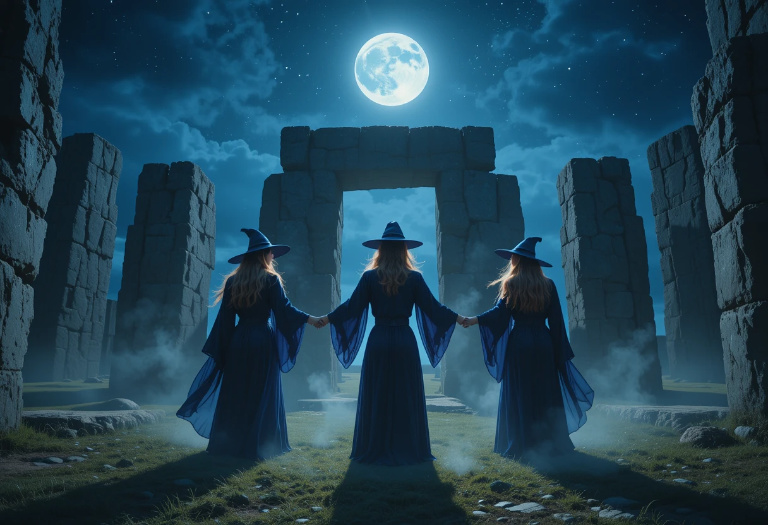
1. What are the Sabbats?
The Sabbats are the eight sacred festivals on the Wheel of the Year—celebrations tied to the seasons and cycles of nature. They include the solstices, equinoxes, and cross-quarter days like Samhain and Beltane. Each one marks a turning point in nature and our magic.
2. Do I need to celebrate all eight Sabbats?
Not at all. Some witches only celebrate the ones that resonate with them, or align with their hemisphere. Start where your spirit feels drawn—maybe the solstices, or a fiery Beltane, and grow from there.
3. What’s the difference between major and minor Sabbats?
Traditionally, the solstices and equinoxes are “lesser” Sabbats, while the cross-quarter days (like Imbolc, Beltane, Lammas, and Samhain) are “greater.” But many witches see them all as equally sacred. It’s your path, your choice.
4. How can I celebrate the Sabbats simply?
Light a candle, write a prayer, cook a seasonal meal, or take a walk in nature. You don’t need a bonfire and full ritual every time. Magic lives in the little moments of intention.
5. What is the purpose of Sabbat rituals?
They help you connect with nature’s rhythm. Each Sabbat offers a chance to reflect, reset, and align your magic with what the Earth is doing—planting, blooming, harvesting, or resting.
6. Can I celebrate the Sabbats if I don’t follow a Celtic path?
Yes—just approach with respect. These festivals are rooted in various traditions, but their core meaning is universal: nature’s turning wheel. You can honor them your way, with your own spiritual flavor.
7. How do the Sabbats connect to spellwork?
Each one carries seasonal energy you can harness. Imbolc is great for new intentions, Beltane for passion spells, Lammas for gratitude magic. Align your spells with the Earth’s cycle and they’ll have extra oomph.
8. Can I celebrate Sabbats alone?
Absolutely. Many witches do solo rituals. Light your candle, speak your truth, offer something to the earth. You are never truly alone when you’re in rhythm with nature.
9. Do Sabbats have specific symbols or colors?
Yes—each one has traditional correspondences. For example, Samhain is tied to black, orange, and skulls; Ostara is pastels, eggs, and flowers. These symbols help you tune in visually and energetically.
10. What if I miss a Sabbat?
Don’t stress. The Wheel keeps turning. You can always reflect or do a late ritual. The important part is staying connected to your path—not being perfect about dates.
Modern Witchcraft and Technology

1. Can I practice witchcraft using my phone or computer?
Yes, definitely. Your phone can be a grimoire, moon calendar, tarot deck, and spell timer all in one. Technology is just another tool—what matters is your energy and intention.
2. Are digital altars or spell apps legit?
Totally. A digital altar can be a sacred screensaver, a playlist, or a Pinterest board filled with magical vibes. As long as it helps you connect and focus, it’s real magic.
3. How can I use social media in my practice?
Follow witches who inspire you, share your own insights, or create aesthetic posts to charge a spell. Just be mindful—social media can be a portal for both magic and comparison. Stay grounded.
4. Is it okay to use e-books or PDFs as my grimoires?
Of course. Digital grimoires are practical and easy to update. Whether it’s a Word doc, a private blog, or a note-taking app, it still holds your magical wisdom.
5. Can I do remote spellwork or energy work online?
Yes—energy isn’t limited by physical space. You can send healing, cast protective energy, or even do group rituals via Zoom or video. Just be clear and grounded before you begin.
6. How can I cleanse digital energy?
Clear your phone or laptop by deleting old junk, organizing files, and setting digital boundaries. You can also place crystals on your devices, say a cleansing chant, or light incense near them.
7. Are online covens or witchy communities real?
Yes! They can be powerful places of learning and connection. Just use discernment—some groups are warm and wise, others not so much. Trust your gut and protect your energy.
8. Can I use AI or digital art in my magic?
Absolutely. You can create magical images, design sigils, write invocations, or generate spell ideas using tech. Just remember: you are the source. Let the tech enhance—not replace—your power.
9. What about online divination tools?
They can be surprisingly accurate. Whether it’s a tarot app, rune generator, or astrology calculator, these tools can offer insights—especially when you combine them with your own intuition.
10. How do I stay balanced with all this tech?
Ground regularly. Touch the Earth, unplug sometimes, light real candles. Let tech be a magical helper, not a master. Remember: magic still lives in dirt, wind, and heartbeat—not just screens.
A Final Word From One Witch to Another
Witchcraft isn’t about labels or proving anything to anyone. It’s about living in tune with yourself and the world around you. It’s quiet mornings, full moons, whispered spells, and trusting your own power. Whether you’ve been walking this path for lifetimes or just felt the pull yesterday, you belong here.
Let yourself explore without pressure. Let the magic be simple. You don’t need permission to be a witch—you just need to remember that the magic has always been in you. Now go light a candle, set an intention, and see what begins to bloom.


